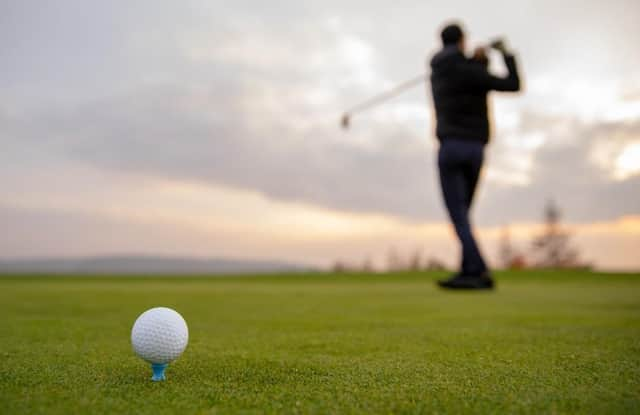FEELING GREAT: Golf is good for you but it can also be physically demanding


And, while many view golf as more of a mental, low-level physical activity, they’re actually surprised at just how demanding it can be. Golfers use numerous parts of their bodies and if they aren’t careful they may end up paying for it with some nagging aches and pains.
Outdoor exercise and golf is good for you - socially, mentally and physically but since courses reopened, we have had a number of golfers needing treatment as they are performing a motion they may not have done for a while.
Advertisement
Hide AdAdvertisement
Hide AdThere are several motor skills involved in a golf swing and you need to possess good flexibility, endurance, power, explosiveness, and core strength. If you’re not swinging the club properly it can result in some common golf injuries such as a torn rotator cuff, lower-back strain, wrist and hand problems and knee stress.
Most golf injuries develop over time due to poor technique, but golfers do sometimes injure themselves instantaneously.
Some of the common issues we have been treating of late include:-
Wrist Injuries
These are known as ECU (Extensor Carpi Ulnaris) injuries. The ECU muscle extends and adducts your wrist and is prone to injury in golfers due to repetition and high force trauma. The tissues can bleed and swell.
Arm Injuries
Advertisement
Hide AdAdvertisement
Hide AdIf you use excessive wrist action in your back swing to achieve a better range of motion and more power when hitting the ball, it can lead to problems. Parts of the arms suffer from contraction and a lot of repetition can lead to what is known as golfer’s elbow, also common to tennis elbow (lateral epicondylitis). These strains are common in people who lack spine flexibility and have weak trunk muscles and they use their arms rather than their spine to achieve longer shots.
Back and Hip Injuries
If you sway forward when bringing your club through by shifting your hips backward during the back swing you may end up with back and hip injuries. Your weight needs to be shifted properly when swinging a golf club as it needs to be transferred from the back to the front foot. If you don’t shift your weight properly it could result in rotator cuff injuries, stress fractures and thoracic sprains.
Equipment-related injuries
The way you carry your clubs around the golf course can lead to back or hip injuries - use a trolley!